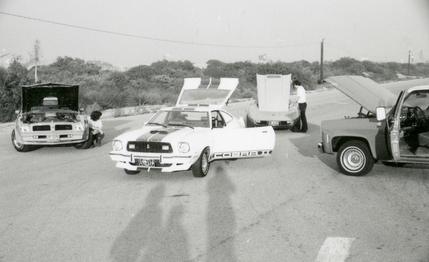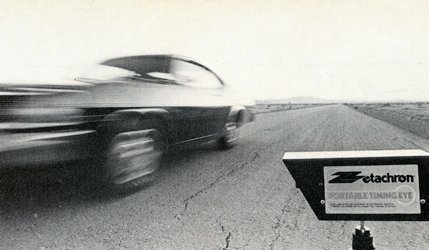
 Archived Comparison
Archived Comparison
The air box poking through the Trans Am's hood is laid against the far right edge of its harness. What's left of 330 foot-pounds of torque has twisted the 7.5-liter prime mover wearing that scoop into an agonizing battle against the elements. The enemy is the wind, skimming over the pagan symbol of flight and fire on the Trans Am's hood to pound the windshield with a 200-horsepower fist.
On the calmer side of the glass, needles stabilize to signal a stalemate. Oil pressure and water temperature are crowding the high side. The tach lies 400 rpm past the redline while the speedometer has thrust itself deep into the numberless never-never zone. The mighty Pontiac, born in the wind tunnel, raised on the dragstrip and educated on the road course, is flat out, straining against its limit.
We are at Troy Dry Lake. The terrain is tabletop level, like Bonneville, but instead of craggy salt, this course offers a five-mile ribbon of perfect asphalt. Mrs. Amelia Orcutt lives at the end, and one of America's finest topspeed test tracks is the driveway to her private wildlife sanctuary. Orcutt Road is the only place we know where the usual jumble of irritations — traffic, weather, police and terrain — dissolves to nothing more than the challenge of an automobile pushing air. At Troy Lake, you can blast perfectly straight for four miles with throttles cocked wide. And that's plenty of space to let a motor clear its throat, wind up tight and show its stuff.
Five machines assembled that day to take on Mrs. Orcutt's driveway. As the sun set, one was left: the fastest American-made production car.


It's true what they say about the performance era being dead in Detroit. Manufacturers now face off on the EPA's dyno instead of the race track. They sell cars by gas mileage, not competition victories. But before we're all carried off the deep end aboard 30-mph four-cylinder Corvettes, the hardware is still available for one last hard ride. A cast from the previous act is waiting in the wings — understudies for yesterday's heroes dressed in hood scoops, power bulges and fat tires. Today's nouveau chic of the performance world came to Mrs. Orcutt's as well, as did the wave of the immediate future. We brought them all together for one final showdown before speed is not only illegal but illegal to buy.
The defending champion was America's perennial sports car, the Corvette — tuned blindingly fast years ago by Zora Arkus-Duntov, today coasting toward a mellow old age. It hasn't had a big-block engine for two years now, and it faced a stout challenge from the burly Trans Am. The Firebird is the very last place to buy a 7.5-liter motor in a manageable-size car, and after a little prodding from the enthusiast press, Pontiac has also preserved a husky manual transmission backstopped by an axle ratio that keeps the revs up.
From the Mopar camp, we invited a Dart Sport 360, identical to its twin-sister Duster 360 and the fastest car Chrysler Corporation builds today. It was a strong dark horse with all but one other entry in our contest covered for horsepower. This advantage came from the fact that the Dart was the only car on the scene with an exhaust unchoked by catalysts.
Ford has once again raised an inquisitive eyebrow at the never-say-die performance buyer with the Cobra II, represented in it's finest 302-cubic inch V-8, four-speed manual-transmission trim. This tricked-up Mustang II is Detroit's state-of-the-art performance car, but the irreverent are already defecting in a bizarre turnabout toward... trucks? So to cover all bets, we had America's fastest non-car as well — a Chevrolet C-10 pickup with more power than you can buy in any other four-wheeler.